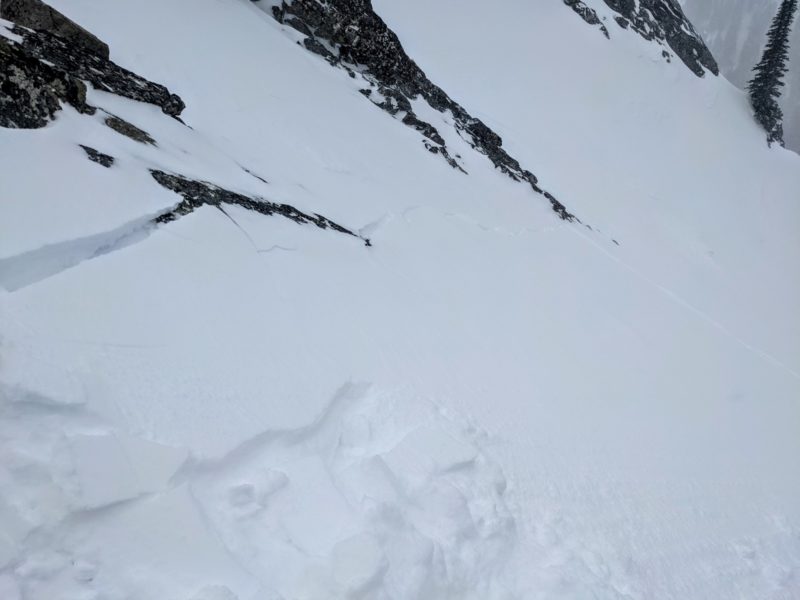Basic Information
Observation Details
Observation Date:
February 20, 2022Submitted:
February 21, 2022Observer:
SAC - VandenBos (off duty), GallZone or Region:
Sawtooth and Western Smoky MtnsLocation:
Fishhook (6,500-9,200, primarily NW-N-NE up high, all aspects down low)Signs of Unstable Snow
Recent Avalanches?
YesCracking?
IsolatedCollapsing?
None ExperiencedSnow Stability
Stability Rating:
GoodConfidence in Rating:
ModerateStability Trend:
Bottom Line
The 3-4" of new snow that fell created small wind drifts and slabs that were reactive to my weight. Most of these slabs were less than 6" thick, but were reactive on steep slopes.
Media/Attachments

Advanced Information
Weather Summary
Cloud Cover:
ObscuredWind:
Moderate , WNew/Recent Snowfall:
1cm at Ranger Station, 3-5cm along the moraine, 6-10cm higher in the mountains.Mild temperatures to start the day, with light snowfall beginning around 10:30. Temperatures slowly decreased through the day. Winds blowing at light to moderate speeds with periodic short gusts in the strong range, first out of the W/SW, then switching around to NW as the day ticked by.
Avalanche Observations
We triggered some D1 sluffs and thin wind slabs involving the new snow. No other avalanche activity observed.
Snowpack Observations
The combination of 6-10cm of new snow and variable winds were enough to build some very small, sensitive wind slabs. The thickest slabs we encountered were in the 15-20cm range, though only the upper portion of these were reactive. It appeared that the very small slabs we were able to trigger were failing on a density change/crystal change within the new snow. Dry loose sluffs and small slabs that we triggered were able to pick up speed quickly as they traveled downslope, thanks to the dense, older snow surface underneath, though it seemed like you needed to be on a slope approaching about 40 degrees to make this happen.
We also encountered quite a few older, stiffer slabs that were unreactive. These were variably distributed and P hard. We avoided them for the most part, to limit hazard and for ease of travel.
Avalanche Problems
The new snow didn't create a single, well-defined avalanche problem, but we were mindful of small wind slabs and dry loose sluffing..
Terrain Use
We exercised caution around wind-loaded areas and in steeper, rockier terrain where the consequences of being caught in a small slide were high. We avoided one very steep slope that had a recent wind slab.
